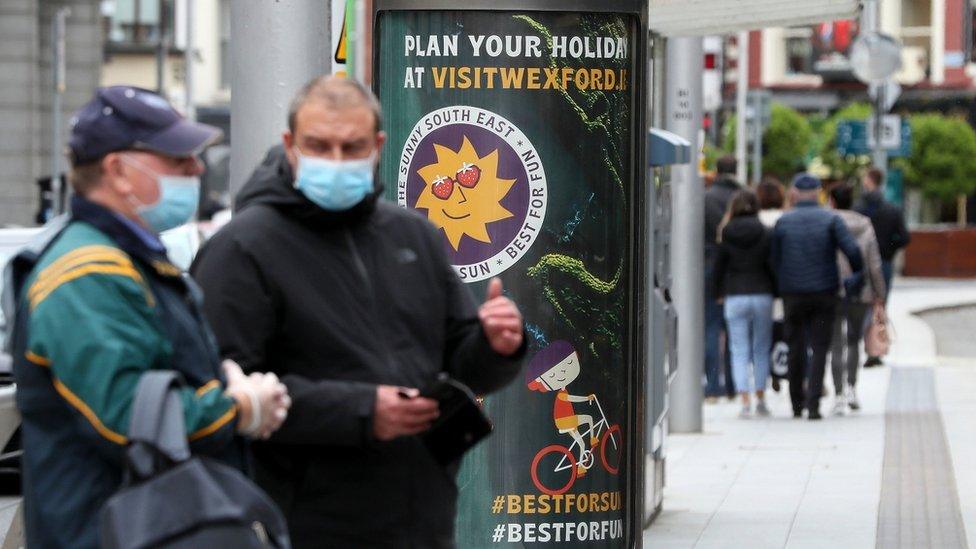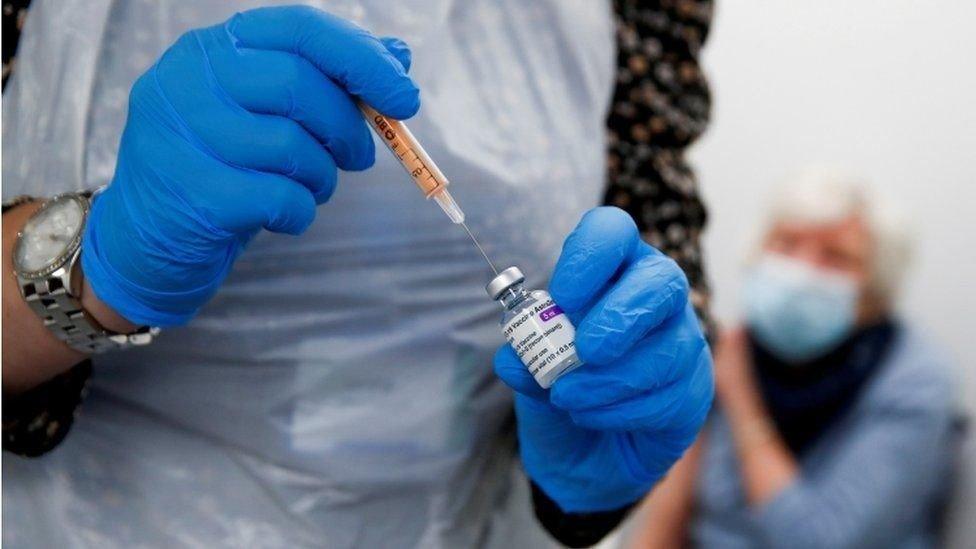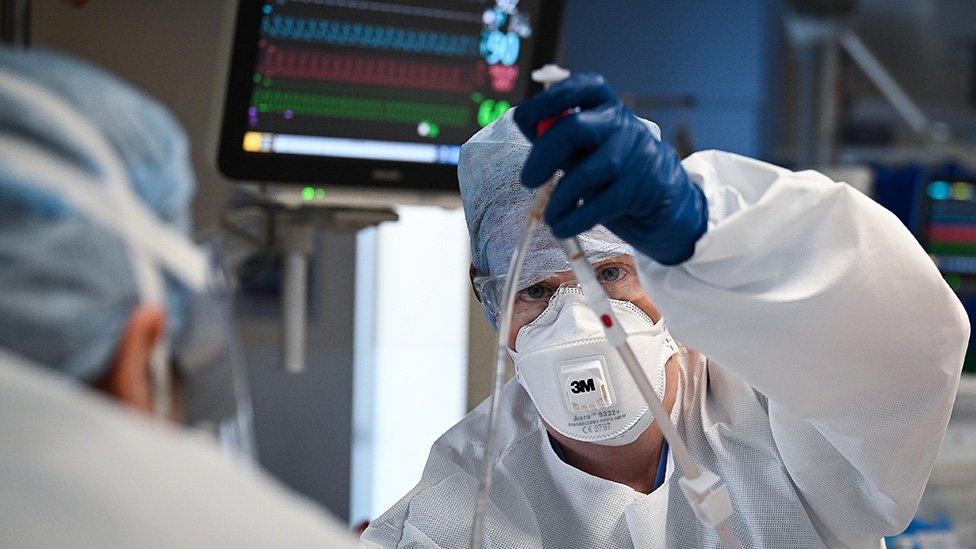Northern Ireland's Covid-19 infection rate falls slightly
- Published

The pubs are open again, pints are being pulled, and there is a semblance of normality returning to life in Northern Ireland.
Covid-19 is still with us, as are many restrictions - but what do the figures associated with the pandemic in Northern Ireland tell us?
Northern Ireland's infection rate is relatively low.
However, it has been hovering around the same level for a number of weeks.
We no longer have the highest infection rate in the UK, but Northern Ireland's rate is still higher than England and Wales.
Scotland has the highest rate in the UK at the minute.
Here are the infection rates per 100,000 population across the UK, for the seven days up until 23 May:
UK - 25.5
England - 24.1
Scotland - 46.7
Wales - 9
Northern Ireland - 32.3
Authorities in the Republic of Ireland calculate the infection rate over the course of 14 days, rather than seven.
A seven-day rate can usually be worked out from data published by the Irish government.
However, these figures haven't been published for two weeks now.
Ireland's last available seven-day infection rate was 60.2 - for the seven days up until 14 May.

The latest data from the Department of Health (DoH) indicates a slight fall in Northern Ireland's infection rate.
It is worth noting that three council areas - Derry and Strabane, Mid Ulster, Newry, Mourne and Down - have elevated rates and are effectively driving Northern Ireland's current rate.
On the other end of the scale, Causeway Coast and Glens, Lisburn City and Castlereagh, and Ards and North Down all have markedly low rates.
In fact, Ards and North Down has one of the lowest in the UK at 3.1 cases per 100,000.
That is based on UK data for the seven days up to 23 May.
Department of Health figures for the week until 27 May places it at 5.6. In either case, it is extremely low.
Generally, the Republic's infection rates have been falling slowly.
However, east Donegal remains stubbornly high, with west Cavan - bordering Fermanagh - also high.
That said, other border areas - such as Leitrim and north Louth - have lower infection rates.
Vaccinations
More than 70% of Northern Ireland's adult population has now received at least one dose of vaccine.
And as of this week, any adult in Northern Ireland can make an appointment to get a jab.
Compared to most other places in the world, that is impressive.
The vaccine rollout has certainly slowed somewhat - especially for first doses - over the past month or so.

And this slowdown cannot be attributed simply to more vaccine vials being required to give second doses.
It is accepted that younger adults (those under 40) tend to be slower in coming forward to get the vaccine and this is likely contributing to the fall in first doses being administered.
Wales has been leading the way for the UK in vaccines, which can be seen by the percentages of adult populations to have received a first dose:
England - 73.4%
Scotland - 72.1%
Wales - 84.3%
Northern Ireland - 71.4%
In the Republic of Ireland about 37.4% of adults have received a first dose.
Hospitalisations
Thanks to the vaccination programme, we are seeing fewer patients in hospitals with the virus, despite the fact that restrictions have been lifting.
According to the latest DoH data, there are now just 28 people with the virus in Northern Ireland's hospitals and only one or two people being admitted each day.
These numbers are roughly equivalent to what we saw during the summer last year - between the two peaks of the pandemic.

There are two patients with coronavirus in intensive care. This number has been the same for almost two weeks.
For context, at the height of the winter surge there were more than 1,000 patients with the virus in hospital and more than 70 in intensive care wards.
Deaths
Northern Ireland's death rate is now down to zero, based on the latest seven-day rolling average.
Of course, one further death will immediately raise this rate but Northern Ireland's death rate has been very low (between 0 and 2) for more than a month.
And, given the continuing roll out of the vaccination programme, falling infection rates and a very low number of hospitalisations, the death rate should remain greatly supressed.
- Published21 May 2021

- Published28 May 2021
